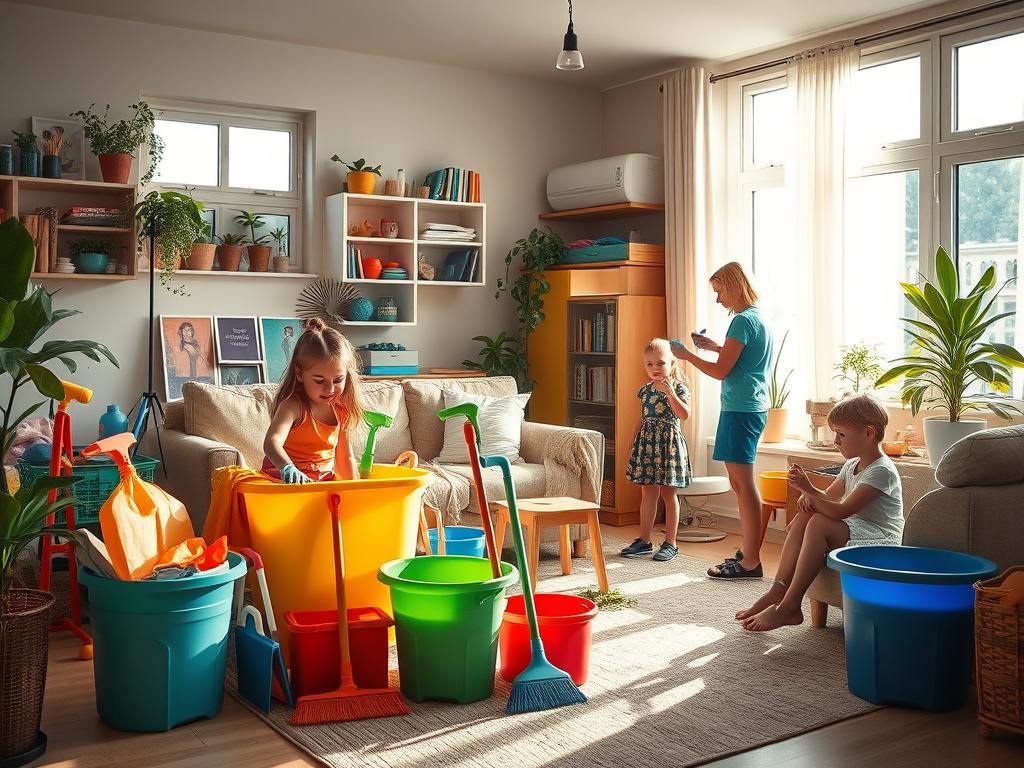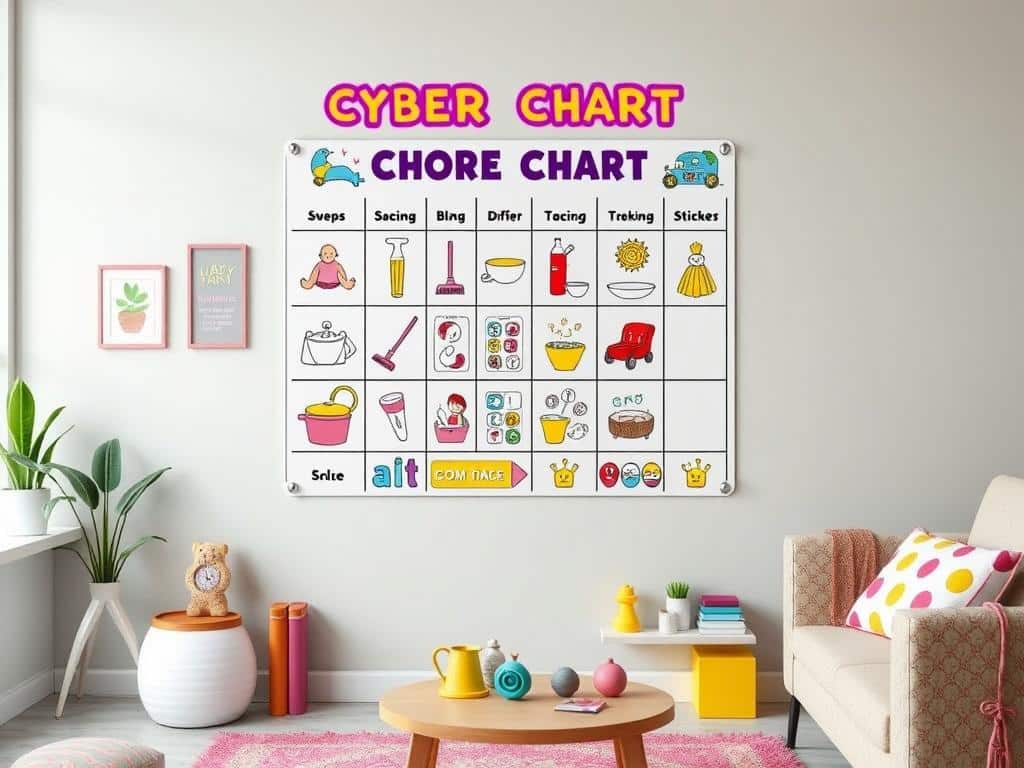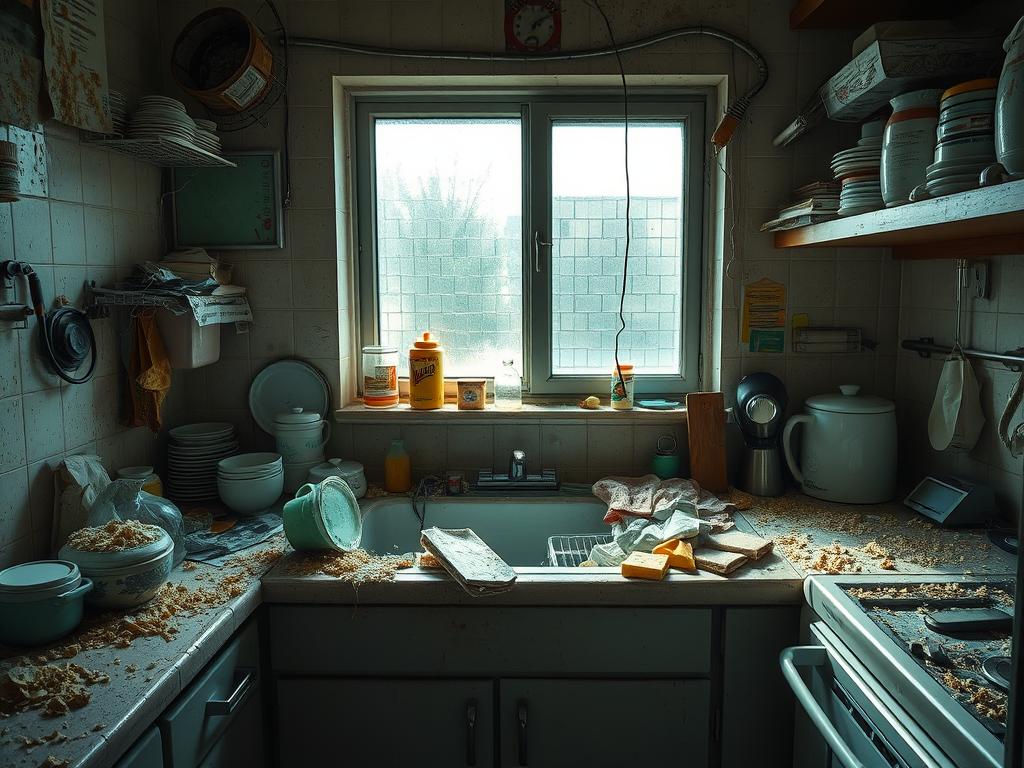
The transition from a kid-free, orderly home to a dynamic family environment can often result in a feeling of constant disarray. The need for maintaining a clean and tidy space is amplified when children enter the picture, bringing with them their unique opinions and belongings. Despite the evolution of your living situation, a harmonious balance of cleanliness and family life is achievable. By employing steps to integrate your family into the cleaning process and embracing a patient and educational approach, you can foster a positive environment where the home stays organized, and children learn responsibility.
Creating a family-friendly cleaning routine is essential. Research shows that women generally tend to be more stressed out by mess, and the imbalance of household responsibilities can exacerbate this. Establishing a cleaning routine on a weekly basis can contribute to a less overwhelming task as a whole. In fact, many mothers find it beneficial to clean their entire house every week to maintain sanity and reduce stress levels. Organizing and downsizing belongings can significantly ease the cleaning process, saving time and reducing headaches.
A well-structured schedule that involves efficient home organization and child-friendly cleaning routines can make the process less daunting. Allocating specific time blocks in the daily routine for cleaning tasks can enhance efficiency and effectiveness. Creating a suitable cleaning routine that suits personal preferences and lifestyle can lead to consistency and improved household maintenance. Encouraging kids’ involvement in house chores through fun activities like dancing to music while cleaning not only promotes teamwork but also lightens the cleaning load for parents.
By encouraging children to participate in chores, you are not only instilling a sense of responsibility but also making the cleanup process enjoyable. Rotating toys every 2-3 months can give the impression of new toys and reduce the number of toys creating a mess. Implementing these mess-free home strategies can lead to a consistently clean and happy home environment, making family life more enjoyable.
Declutter Regularly
Maintaining a clutter-free home is crucial, especially with children around. Regular decluttering techniques ensure that your home remains organized and stress-free. A clutter-free home not only simplifies cleaning tasks but also cultivates a sense of peace within the household.
Benefits of Decluttering
Engaging in decluttering offers numerous advantages. First and foremost, implementing decluttering techniques reduces the number of items in your space, decreasing the potential for messes. Regularly purging unwanted items helps maintain a sense of order and simplicity. According to Leo Babauta, who has six children, setting boundaries by containing clutter to specific areas and using bins or baskets for kids’ items can significantly enhance home organization.
Additionally, the decluttering benefits are vast. Households with kids often experience a rapid buildup of clutter, necessitating frequent cleanup sessions. Consistent decluttering, at least quarterly, ensures that messes don’t accumulate, making it much easier to tidy up. In fact, 65% of parents implement regular declutter sessions every few months to reduce cleaning tasks effectively.
Creating a Decluttering Schedule
To maintain a clutter-free home, a regular declutter routine is essential. Here are some strategies to create an effective schedule:
- Set Routine Purges: Conduct massive purging sessions every few months to eliminate redundant and unused items.
- Adopt Challenges: Join initiatives like a #10DayDeclutter challenge to stay motivated and accountable.
- Involve the Family: Teaching children to clean and allocate chores instills a sense of responsibility. Encouraging the concept of a “home” for everything can promote organization from an early age.
Not only will this routine make cleaning tasks more manageable, but it will also foster a more peaceful and organized home environment. Remember, decluttering is not a one-time task but an ongoing effort to keep the home harmonious and clutter-free.
A Dedicated Place for Everything
Assigning a specific location for each household item plays a pivotal role in keeping a home organized, especially when children are involved. Utilizing creative storage solutions such as trays for paperwork, baskets for shoes, and appropriate storage for out-of-season items can significantly reduce clutter. Moreover, maintaining organization in areas like kitchen counters and entryways can streamline the process of tidying up while teaching children the importance of consistency and structure in home maintenance.
Utilizing Storage Solutions
Effective use of storage solutions is essential for optimizing space and maintaining a clutter-free home. Implementing strategies such as storage optimization ensures every item has its dedicated place, making it easier to find and return items after use. For kid-friendly storage, consider using colorful baskets and clearly labeled bins to make tidying up an engaging activity for children.
Organizing High-Traffic Areas
High-traffic areas like entryways require special attention to remain tidy and functional. Implementing entryway organization solutions such as hooks for coats, cubbies for shoes, and trays for keys can keep these spaces orderly. Regularly scheduled maintenance ensures that these areas do not become dumping grounds, promoting better household item placement and overall high-traffic area organization.
| Task | Time Required | Suggested Storage Solution |
|---|---|---|
| Organize Entryway | 15 minutes | Hooks, cubbies, trays |
| Sort Toys | 30 minutes | Colorful baskets, labeled bins |
| Sort Paperwork | 20 minutes | Trays, file organizers |
| Store Out-of-Season Items | 1 hour | Labeled storage bins |
Incorporate Cleaning as A Daily Habit
Establishing effective daily cleaning routines is crucial for maintaining a home’s cleanliness, especially with children in the household. Transforming cleaning activities into non-negotiable habits may begin with simply washing dishes or making beds daily, gradually leading to a more consistent home cleaning practice.
One approach to forming these habits includes committing to smaller tasks, like making the bed each morning. Over time, this enables the foundation for less stressful and more organized living. Habit formation in cleaning can seem daunting initially, but by integrating cleaning habits into the daily routine, families can prevent their homes from falling into chaos.
Consistency is key. To integrate cleaning habits successfully, consider adopting daily micro-tasks. This could include a quick 20-minute tidy-up session at the end of each day. This strategy promotes consistent home cleaning practices, making the larger tasks on a dedicated cleaning day more manageable. It’s a practice that nurtures long-term cleanliness and order without overwhelming the family.
For example, embracing a consolidated cleaning day, usually Fridays, has proven to be efficient for many. Families often complete their entire cleaning routine, including tasks like vacuuming, dusting, and mopping, in approximately 2-3 hours. Starting around 9:30 AM and finishing by lunchtime ensures that the weekend is free for leisure activities, fostering a balance between work and relaxation.
The involvement of children in cleaning routines can significantly streamline household chores. Assigning age-appropriate tasks, such as having six, seven, and eight-year-olds help out in ways that match their capabilities, ensures that everyone participates. Adopting a one-on-one approach makes the process more personal and effective than group cleaning, easing the learning curve for younger kids.
Moreover, rewarding children with a small incentive, like offering a bowl of ice cream as a mid-morning snack after completing their tasks, can make these routines enjoyable. This technique simultaneously reinforces positive behavior and encourages consistent home cleaning practices.
Using proper cleaning tools and products also simplifies the process. Products like a Shark Steam Mop, brooms, dustpans, cleaning rags, and homemade cleaners ensure effective cleaning. Notably, natural cleaning solutions like Pine Sol and Caldrea can make the experience safe and pleasant for the whole family.
Below is a summarizing table highlighting an effective cleaning schedule:
| Task | Frequency | Time Taken | Reward/Incentive |
|---|---|---|---|
| Making Bed | Daily | 5 minutes | N/A |
| Washing Dishes | Daily | 15 minutes | N/A |
| Quick Tidy-Up | Daily | 20 minutes | N/A |
| Comprehensive Cleaning | Weekly | 2-3 hours | Free Weekend |
| Children’s Assigned Tasks | Varies | 30 minutes | Bowl of Ice Cream |
By adopting and maintaining these systematic cleaning habits, families can enjoy a cleaner home environment with less stress and more harmony. The key lies in structuring these daily cleaning routines so that they become a natural part of everyday life.
Effective Cleaning Habits
Establishing effective cleaning habits in a family setting is crucial for maintaining an organized and tidy home. Implementing a structured system for family chore distribution, involving both adults and children, cultivates a sense of responsibility and teamwork. By integrating a daily cleaning checklist and kid-friendly chore charts, families can simplify housekeeping tasks and ensure consistent upkeep.
Daily Routines for Different Family Members
Involving children in routine cleaning activities tailored to their age groups helps instill good habits and eases the workload for everyone. Here are suggested chores per age group:
- Under 2 years old: Putting away clean utensils, placing clothes in a hamper, assisting with laundry shifts, matching socks.
- 4-year-olds: Unloading the dishwasher, tidying up toys, setting the dinner table, wiping down playroom tables.
- 7-year-olds: Taking out the trash, wiping bathroom counters and toilets, vacuuming hallways, gathering towels and bathmats for washing.
- 9-year-olds: Washing kitchen rags, cleaning bathrooms, preparing dinner, vacuuming.
- 11-year-olds: Washing towels and bathmats, cleaning bathrooms, making dinner, mopping floors.
These tasks not only engage kids in daily cleaning but also teach them the importance of contributing to household maintenance.
Using Checklists and Chore Charts
Creating a daily cleaning checklist and utilizing kid-friendly chore charts can provide visual reminders and structured guidance for everyone. Such tools help streamline family chore distribution and ensure no task is overlooked. Incorporating a reward system, based on non-monetary incentives, motivates children to participate willingly.

- Managing family economy money
- Watching family movies on Fridays
- Going on Saturday outings after a collective cleanup effort
These strategies promote a sense of working together for the greater good of the family, reinforcing the value of shared responsibilities without relying on financial rewards. By integrating engaging and simple organizational systems, such as specific toy boxes for different categories, maintaining order becomes more achievable and less stressful for the entire family.
Cleaning Home with Kids
Involving children in cleanup activities can make cleaning time both fun and educational. Tailoring tasks to be age-appropriate empowers children to contribute to household cleanliness while gaining vital life skills. From praising toddlers for putting away toys to implementing a rewards system for completing chores, these strategies not only lighten the workload for parents but also instill valuable habits in the young ones.
Making Cleaning Fun for Kids
Engaging children in housekeeping can be a delightful experience with the use of fun cleaning games. Parents can turn chores into family cleaning activities by incorporating playful elements like timed challenges or scavenger hunts. Here are some ideas:
- Using music to create a lively atmosphere.
- Implementing a point system where kids earn rewards for completed tasks.
- Creating themed cleaning days, such as a pirate treasure hunt to find hidden items.
These approaches transform routine tasks into enjoyable moments, encouraging children to participate willingly and enthusiastically.
Age-Appropriate Chores
Assigning appropriate chores for kids ensures they can effectively contribute based on their capabilities. Below is a helpful guide on age-appropriate tasks for children:
| Age Group | Chores |
|---|---|
| 2 to 4 years | Sorting items, checking under beds, dusting baseboards |
| 5 to 6 years | Carrying laundry, dusting furniture, making beds, putting away toys and books |
| 7 years and above | Vacuuming, changing sheets, cleaning toilets, setting the table |
| 10 years and above | Scrubbing bathtubs/showers, loading dishwasher, washing dishes |
Introducing children to a variety of chores not only helps maintain a clean home but also prepares them for future responsibilities. Research shows that only 28% of parents require their children to do chores around the house, with many kids entering college without basic household skills. By involving kids from a young age, you empower them to develop crucial life competencies and foster a sense of responsibility.
Invest in the Right Cleaning Tools
Equipping your home with the right cleaning tools and products can significantly enhance the efficiency and safety of your cleaning routine. Investing in efficient cleaning tools such as high-quality vacuums and microfiber mops will streamline your household tasks. Additionally, the use of ergonomic cleaning equipment minimizes physical strain, making the cleaning process easier and more enjoyable.
When considering the well-being of your family, opting for family-safe cleaning products is essential. Non-toxic cleaners provide a safe environment for children and pets, reducing potential exposure to harmful chemicals. Essential cleaning supplies should always be readily available to tackle spills and messes promptly, ensuring your home remains tidy and organized.
Effective cleaning solutions also involve choosing products that cater to every family member. Ergonomic cleaning equipment can make chores less cumbersome, while investing in child-sized cleaning tools allows kids to participate in maintaining household cleanliness. Incorporating child-sized brooms, mops, and dust pans not only involves children in daily chores but also instills a sense of responsibility and teamwork.
Making cleaning a family activity is easier with the right tools. High-quality, efficient cleaning tools, such as those recommended in guides like clean my house, can help manage tasks more effectively. For a family-friendly approach, natural and family-safe cleaning products should be a priority to ensure a healthy living environment.
| Cleaning Tools | Benefits |
|---|---|
| Efficient Vacuums | Quick and thorough cleaning of carpets and floors. |
| Microfiber Mops | Effortless floor cleaning with minimal water usage. |
| Ergonomic Cleaning Equipment | Reduces physical strain, making cleaning tasks more comfortable. |
| Child-Sized Cleaning Tools | Encourages kids to participate in household chores. |
Your essential cleaning supplies list should include versatile and efficient cleaning tools that cater to both adults and children. Ensuring easy access to these supplies can significantly improve your home’s cleanliness and organization, making daily tasks a collaborative and enjoyable experience for the entire family.
Accepting the Mess and Being Flexible
In the throes of family life, especially with young children, embracing household mess becomes a necessary part of maintaining sanity. Developing a flexible cleaning approach can help you navigate the unpredictability that comes with this stage of life. It’s important to appreciate the various family life stages you go through, understanding that the chaos isn’t permanent but rather a part of joyful parenting amid mess. Allowing yourself grace as you adapt to these changes makes all the difference.
Understanding the Season of Life
This season of life might include dealing with frequent outfit changes for your little ones or managing a high turnover of cleaning activities. For instance, the author’s youngest son wears four different outfits a day, which is reflective of high laundry needs in homes with young children. Accepting these unique challenges, including unexpected DIY mishaps like a broken vacuum, can help you maintain a realistic view of what your household can look like.
In older homes with pets and kids, cleanliness may look different. Regularly cooking meals, despite the household’s hustle and bustle, adds to the complexity. Yet, these moments also bring about a chance to savor home-cooked goodness as a family. Embracing a flexible cleaning approach can provide a more peaceful coexistence amid the clutter.
Finding Joy in the Chaos
In this dynamic household rhythm, joyful parenting amid mess is about focusing on moments of togetherness and appreciating the little victories. For example, the author’s cheap and pilly couch is a testament to practicality over perfection. It’s part of a home where life is lived fully, and kids understand responsibility through small acts, like bringing their plates to the kitchen. Working as a team to navigate the day-to-day chaos fosters a sense of unity.
Remember, this phase won’t last forever. By appreciating family life stages and finding joy in the chaos, you cultivate an environment where love and relationships take precedence over spotless floors. Ultimately, this makes your home a nurturing place for your children’s growth and your own peace of mind. Embrace the mess, and let the memories formed within those walls be the real hallmark of a happy home.
Conclusion
This comprehensive guide on how to clean a home efficiently with kids offers a multitude of practical strategies aimed at creating a tidy, organized living space while juggling the demands of a bustling family life. By implementing regular decluttering activities and ensuring every item has a designated spot, you can maintain an orderly household. Establishing daily cleaning habits further simplifies this process, making it easier for all family members to contribute to home maintenance.
Incorporating children into cleaning routines not only lightens the workload but also instills valuable life skills. From meal preparation and organizing to clear communication and teamwork, children learn essential competencies through chores. Remember, choosing age-appropriate tasks and acknowledging their efforts fosters a sense of responsibility and accomplishment in youngsters. For a detailed guide on safe and effective toy cleaning, especially for squishy toys, check out this link.
Investing in the right cleaning tools and accepting a degree of imperfection can further enhance your efforts in maintaining a clean home. Regularly rotating chores among family members not only ensures fairness but also keeps everyone motivated. As you wrap up efficient home maintenance, remember that these strategies do more than just tidy up your living space; they build a foundation of unity, responsibility, and invaluable life lessons for your children.



